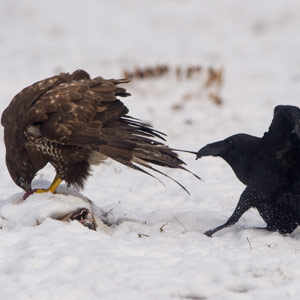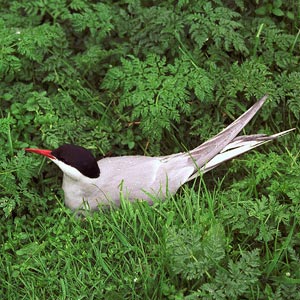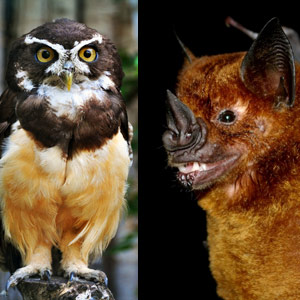Pratique | Débuter
Corvidés et rapaces : des relations difficiles

Grand Corbeau (Corvus corax) harcelant une Buse variable (Buteo buteo) pour profiter d’une carcasse de renard en Belgique en janvier 2019.
Photographie : Marc Fasol
Introduction
Le houspillage (ou « mobbing » en anglais) est composé d’attaques individuelles ou collectives (généralement simulées et bruyantes) contre des prédateurs potentiels. Bien que ce comportement représente une dépense d’énergie et de temps et qu’il peut être dangereux, il permet de décourager et d’éloigner les intrus, d’avertir d’autres oiseaux de la présence d’un possible danger et de détourner les prédateurs des nids et des poussins. Ce comportement a été noté chez un grand nombre d’espèces, mais les Corvidés (corneilles, corbeaux, geais, pies, etc.) sont particulièrement actifs et réagissent souvent fortement à la présence, quand elle est jugée gênante, des rapaces diurnes et nocturnes.
Marie-Claire Imbert a observé et photographié l’attaque de trois Buses variables (Buteo buteo) par des Corneilles noires (Corvus corone), nous donnant l’occasion d’évoquer les relations houleuses entre rapaces et Corvidés.
Abstract
The mobbing behaviour consists of collective attacks (usually simulated, but very noisy) towards predators. Although mobbing requires time and energy, and is potentially dangerous, it obviously offers several benefits: discouraging predators, warning other birds of the presence of a possible attacker; and diverting attention from nests and chicks. Mobbing behaviour has been recorded in a wide range of species, but it is particularly well developed in gulls and terns, while crows, jays and magpies are amongst the most frequent mobbers. They are often seen chasing diurnal and nocturnal raptors.
Marie-Claire Imbert watched and photographed three Common Hawks being mobbed by Carrion Crows, and she sent us her photos. This article deals with the mobbing relations between corvids and raptors.
Poursuivez la lecture de cet article, en vous abonnant dès maintenant !
Découvrez les Archives d’Ornithomedia.com
Pour seulement 10,00 €TTC/an (ou 6,00 € les 6 mois)
Profitez de plusieurs centaines d’articles en accès illimité et sans aucun engagement.
Compléments
Ouvrages recommandés
- The North American Bird Guide David Sibley
- Le guide Ornitho Killian Mullarney
Sources
- Whit Gibbons (2011). WHY DON’T HAWKS FIGHT BACK? Date : 20/03. http://www.uga.edu/srel/ecoviews/ecoview110320.htm
- Bruce D. Ostrow (2005). Bald Eagle kills crow chasing a hawk. Wilson Journal of Ornithology. Date : décembre. http://findarticles.com/p/articles/mi_hb5046/is_4_118/ai_n29317908/
- Journey North. Neighborhood Watch: How Redwings Protect Their Babies. http://www.learner.org/jnorth/tm/rwbb/Redwing_NeighborhoodWatch.html
- Wikipedia. Mobbing (animal behavior). http://en.wikipedia.org/wiki/Mobbing_(animal_behavior)
- Mariette Nowak (2000). When Birds of a Feather Mob Together, It’s Usually Bad News for Predators. National Wildlife. Feb-March. http://findarticles.com/p/articles/mi_m1169/is_2_38/ai_59495830/
- Deborah Buitron (1983). Variability in the Responses of Black-Billed Magpies to Natural Predators Behaviour. Vol. 87, No. 3/4, pp. 209-236. http://www.jstor.org/stable/4534304
- Kevin J. McGowan, Glen E. Woolfenden (1989). A sentinel system in the Florida scrub jay. Animal Behaviour Volume 37, Part 6, juin, Pages 1000-1006 http://www.sciencedirect.com/science/article/pii/0003347289901449
- A. Sordahl (1990). The Risks of Avian Mobbing and Distraction Behavior: An Anecdotal Review. The Wilson Bulletin Vol. 102, No. 2, juin, pp. 349-352. Publié par la Wilson Ornithological Society . http://www.jstor.org/stable/4162880
- Slagsvold T. (1985). Mobbing behaviour of the hooded crow Corvus corone cornix in relation to age, sex, size, season, temperature and kind of enemy. FAUNA NORVEGICA, SER. C. Vol. 8, no. 1, pp. 9-17. http://md1.csa.com
- Flasskamp A. (1994), The Adaptive Significance of Avian Mobbing V. An Experimental Test of the ‘Move On’ Hypothesis. Ethology, 96: 322–333. http://onlinelibrary.wiley.com/doi/10.1111/j.1439-0310.1994.tb01020.x/abstract
- Brown E. D. (1985), Functional Interrelationships Among the Mobbing and Alarm Caws of Common Crows (Corvus brachyrhynchos). Zeitschrift für Tierpsychologie, 67: 17–33. http://onlinelibrary.wiley.com/doi/10.1111/j.1439-0310.1985.tb01375.x/abstract
- Michael R. Conover (1985). Protecting Vegetables from Crows Using an Animated Crow-Killing Owl Model. The Journal of Wildlife Management Vol. 49, No. 3 (juillet), pp. 643-645. http://www.jstor.org/stable/3801687
- Cully J. F. et Ligon J. D. (1986), Seasonality of Mobbing Intensity in the Pinyon Jay. Ethology, 71: 333–339. http://onlinelibrary.wiley.com/doi/10.1111/j.1439-0310.1986.tb00597.x/abstract
- RSPB. Mobbing. http://www.rspb.org.uk/advice/watchingbirds/behaviour/mobbing.aspx
- Robert Charles Humphrey (1989). Observations on cooperative mobbing of a Bald Eagle. J. Raptor Res. 23(2). 48.




 2 commentaires
2 commentaires


2 commentaire(s) sur ce sujet
Participer à la discussion !David Bismuth
sevran
Posté le 23 octobre 2012
Bonsoir, merci beaucoup pour cet exemple très complémentaire de l’article 🙂
François-Marie ZWANK
LA SEYNE SUR MER
Posté le 19 octobre 2012
Excellent article. J’ai pu observé cet été à l’Arboretum de Pierrefeu dans le Var, un geai des chênes houspiller un milan noir qui s’était posé dans son secteur. Le rapace a essayé de tenir une dizaine de minutes en esquivant les attaques du corvidé. Mais devant la virulence de celles-ci, il a fini par abandonner sa position.